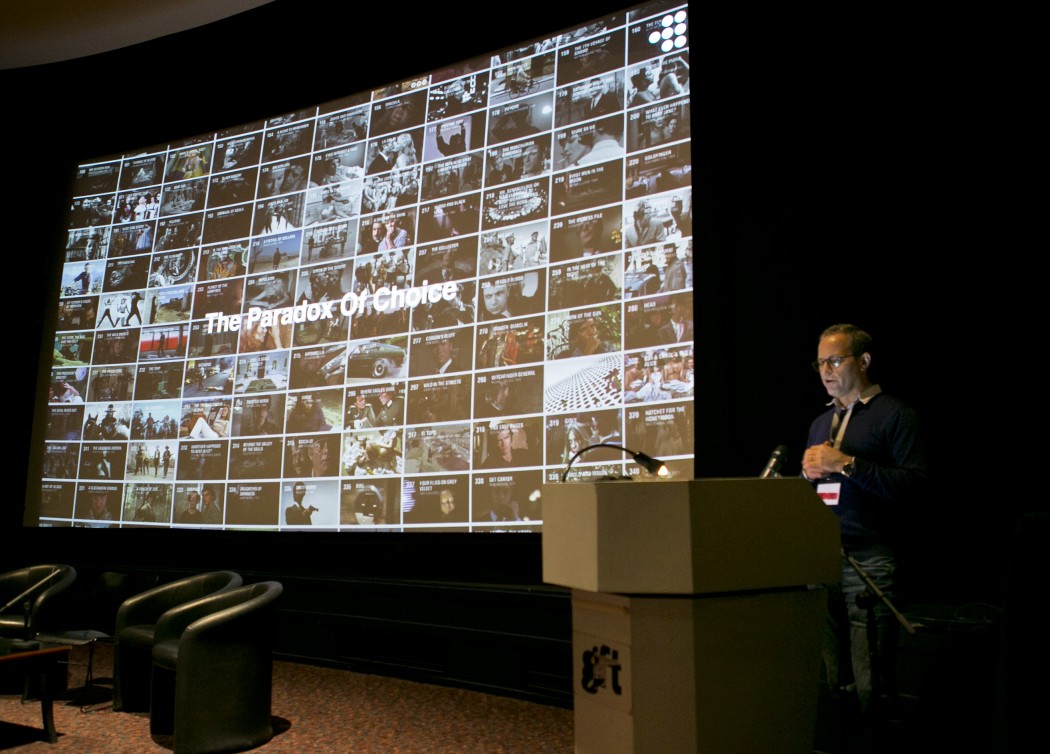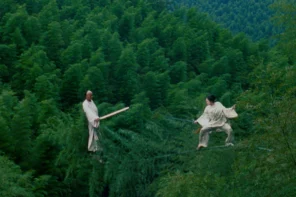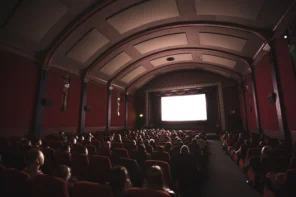The first day of the conference began with questions; about an abundance of content and formats, the design and purpose of physical spaces and the question of the audience experience at the heart of it all.
Keynote #1 – Bobby Allen, VP of Content, Mubi
Caring is the Cure: solving the paradox of choice in the digital universe. Or, how a trip to a local video rental shop (remember those?) changed our fortunes.
Bobby Allen was optimistic in his opening remarks, “Every cloud has a silver lining,” we were told. Mubi, he said, are tackling the same challenges as exhibitors:
- Abundance represents a major threat and an opportunity
- A shared passion for cinema also brings a paradox of choice
- Shortening attention spans and fragmented audiences
- The digital universe is changing human behaviour
Allen says we are only just beginning to understand how cinephiles are going to engage with content. We need to maintain the special status of cinema as the greatest art form ever invented but we’re up against consumers in the driver’s seat; from box sets to Love Film, online platforms and subscription models. The diet of content is richer today than it ever has been and audiences are watching it in more places than ever before; on the train, walking, on their iphone, in bed, etc.
We live in a world now where people are obsessed and addicted to screens and it’s not just the “rise of online” but a very real social shift. Allen asked,
What will my expectation be for a trip to the cinema? My time is more valuable and my attention span is shorter than ever.
At the outset, Mubi would receive lots of traffic and curious visitors but fail to find conversion to paying customers. According to Allen, “It turns out that less really is more,” and thus, their 30 days / 30 films curated platform was born. Significantly, the model allowed for editorial support and broke through the “choice paralysis” audiences are so often up against.
But people like to feel that there’s someone behind the programming, so there’s an opportunity for exhibitors; social media and niche marketing can be used to bring people in the real world to films in cinemas. So confident is Allen that the old school video store knowledge and curation is the way to go, Mubi announced their new arm of theatrical releases; they want their brand associated with films in cinemas and online.
If our whole lives are being guided and directed by algorithms, whether we know it or not, then curation & editorial can cut through what Allen calls the “tsunami of entertainment.” His conclusion? It’s positive stuff: “The world needs experts and knowledgable opinion leaders more than ever.”
Keynote #2: Johanna Koljonen, Editor, Nostradamus Project
Bodies, Spaces & Communities: Designing Cinemas (& VR)
Johanna Koljonen, from the Nostradamus Project, talked about the business of human-ing, something we are all good at. We are, she said, in the business of designing communities of people, those who have a relationship to the institutions we work in and the film culture that we’re all a part of and, ideally, to each other.
It’s important to recognise that audiences are physical animals and social beings. We shouldn’t, then, kick the audience out of the cinema, after their screen experience, through the back door, into an alley, by a dustbin. Some places have toilets on the way out and host Q&As after their screenings but surely we can offer something that enables people to interact after seeing a film.
Social interactions are limited by the physical environment but you can work out what does/does not work through customer journey mapping: physically walking through your own venue as if you were a first time customer and asking the questions: Do I like being here? Who can I be in this environment? What can I do here?
In museums, as with cinemas, there is a hierarchy over who is allowed to be loud. Those who can usually laugh loudly are white middle class people; hierarchies are always present in social environments.
There is no reason not to go where we feel comfortable, welcome and allowed.
For Koljonen, you have to be masters of offering physical and social places that people can be a part of – if you can solve that, then cinema has its place, otherwise it is not necessary to the social ecology.
More of Johanna Koljonen’s presentation and slides are available to view here.
Keynote #3: Dawn Walton, Founder/Artistic Director, Eclipse Theatre Company
The Power of Place
Dawn Walton continued to set an optimistic tone, but with a refreshing edge:
It’s not about the price – the ‘offer’ – its about whether or not what you do is any good.
Talking up the virtues of high quality content and strong, meaningful relationships with audiences, Walton is an inspiration and a success: after looking at existing audience development programmes and finding that in most buildings it was about the buildings selling more tickets to audiences and not about the audiences, she started up her own programme.
When Walton hosts an event running 1.5 to 2 hours, she does “the formal bit” for 15 minutes; what Eclipse is, what they’re doing and what they’re touring and then she spends time talking to people in the room, asking them; What do you do? Where do you go? What’s your relationshiup with this building?
Another deficit she noticed was representation. If you can’t see yourself in the theatre or on the TV, other than on Holby City, then you go online and look on YouTube. Looking for content, actually, there’s a lot of stuff, and a lot of black content but, as Walton says;
It’s mostly American and it’s mostly a bit shit. So I thought, ‘I can do better than that’.
Walton made 10 films, all over the country, in just 4 months, and put them up on Eclipse TV. She brought content to audiences all over the country. In their touring programme, Eclipse found that around 25% attending were first-timers and that 1/3 of the audiences return to the venues for another show. They also learnt that 1/4 travel more than 20 miles to get to the events and, most significantly that Eclipse hit higher than the venues in 2 key areas: 1) low engagement, and 2) experience seekers.
Walton’s keynote reminded the room that audiences do exist, the experience is key and that the building it takes place in is just one tool with which to marry those two things.
Written by Tara Judah for The Bigger Picture. Keep up with everything from This Way Up on Twitter with @thiswayupcon @bigger_pict #ThisWayUp16 #biggerpicture
Photograph courtesy of Eoin Carey.





